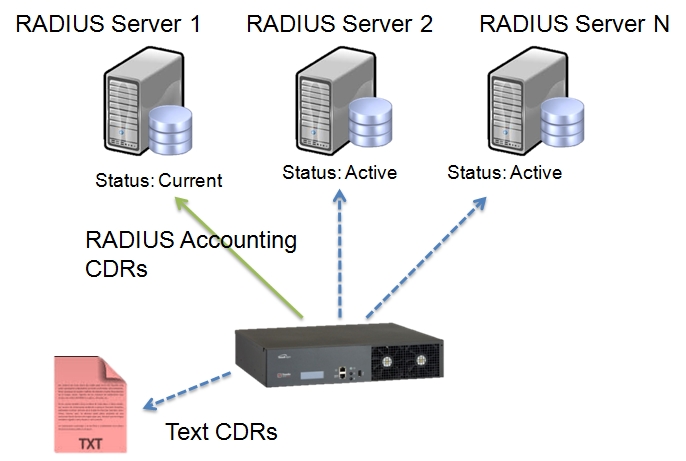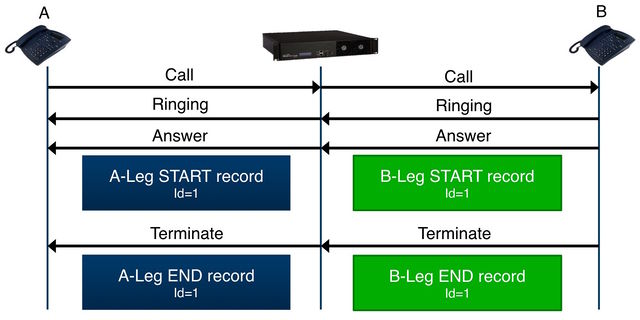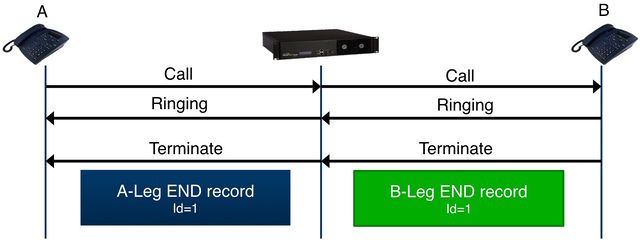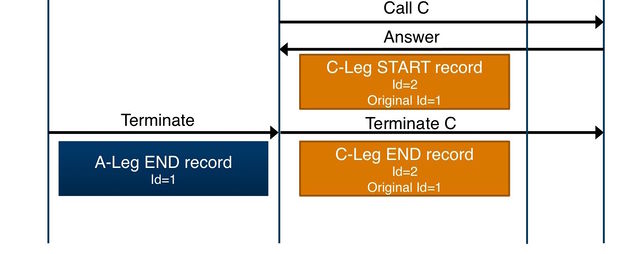Glossary: Call Detail Records (CDR)
Definition
Call detail records, or CDR for short, are the foundation of subscriber billing activities by telecom service providers. They are data records containing call-related information such as:
Incoming Network
Outgoing Network
Calling number
Called number
Start time
End Time
TelcoBridges and call detail records
TelcoBridges TMG800, TMG3200, TMG7800 and ProSBC products support the generation of call detail records in text format. They also support the ability to export call detail records to a RADIUS server for accounting purposes. Both methods can be used simultaneously.
Text CDRs are stored locally on the devices and must be extracted from the system either manually, or automatically.
If the network supports RADIUS, this method is preferred as each record will be sent in a timely manner to an external database for storage.

Call Detail Records Generation
TelcoBridges CDRs are generated on a per-leg bases when the call is answered and when the call is terminated.
In the cases illustrated below:
Id is a 128 bits unique identifier for all the records of a same call.
h323-conf-id for RADIUS and @{SessionId} for Text CDR
'Original Id is a 128 bits unique identifier used for Call Transfer records. Each call transfer outgoing legs has its own unique Id with its Original Id associated call legs (incoming+outgoing).
h323-incoming-conf-id for RADIUS and @{OriginalSessionId} for Text CDR
Case 1: Call Answered

Case 2: Call Unanswered

Case 3: Call Transferred


Text-based Call Detail Records
Text-based call detail records
RADIUS Call Detail Records
Call Detail Records in High Availability (HA) Environment
The term HA refers to a system equipped with primary and secondary host controllers (i.e. A SBC deployed in a 1+1 configuration, a TMG7800 gateway with redundant controllers or Tmedia gateways deployed in a 1+1 configuration)
Text CDR only Mode
The active gateway application is storing text-based CDR records on the active host (i.e. non-zero bytes of CDR log file)
Each CDR record will only be present either on the primary or on the secondary host
The user needs to merge the CDR records from both the primary and secondary hosts to get all the data
RADIUS CDR only Mode
CDR records will be sent out to the RADIUS server(s) from the gateway application on the active host only
No CDR records are stored on the HA system
Text and RADIUS CDR Mode
CDR records will be sent out to RADIUS server(s) from the gateway application on the active host
The active gateway application is also storing text-based CDR records on the active host (i.e. non-zero bytes of CDR log file)
Also, each text-based CDR record will only be present either on the primary or on the secondary host
The user needs to merge the CDR records from both the primary and secondary hosts to get all the data
RADIUS CDR with text CDR fallback Mode
If the RADIUS server(s) is(are) in service
CDR records will be sent out to the RADIUS server(s) from the gateway application on the active host only
If the RADIUS server(s) is(are) out of service
The active gateway application is storing text-based CDR records on the active host (i.e. non-zero bytes of CDR log file)
Each CDR record will only be present either on the primary or on the secondary host
The user needs to merge the CDR records from both the primary and secondary hosts to get all the data
Click here for instructions on Customer defined CDR records
Links on Call Detail Records
Last updated
Was this helpful?
